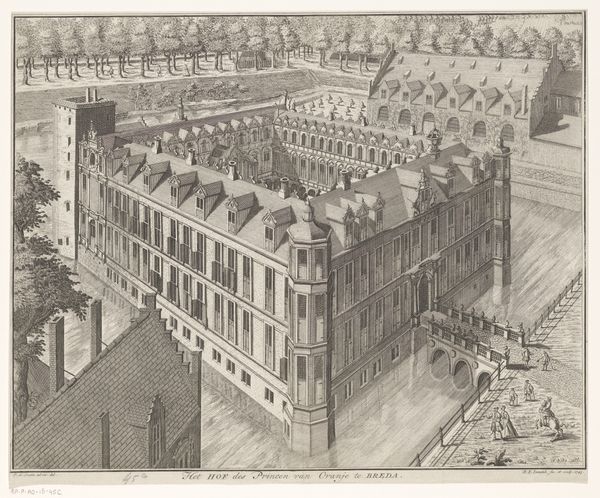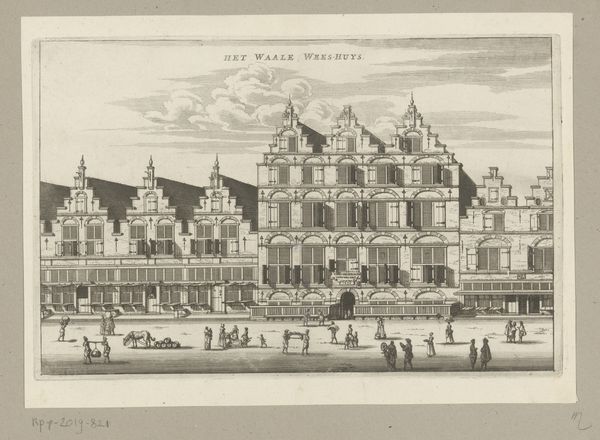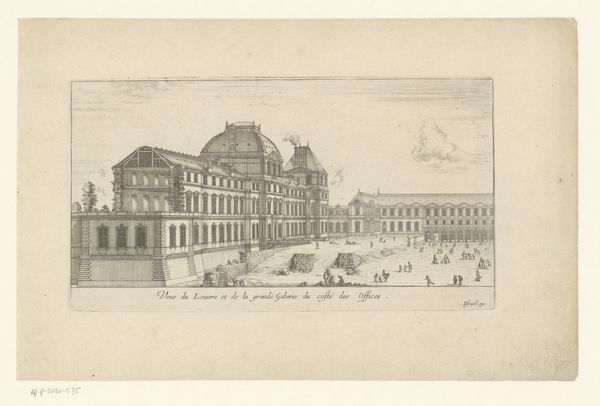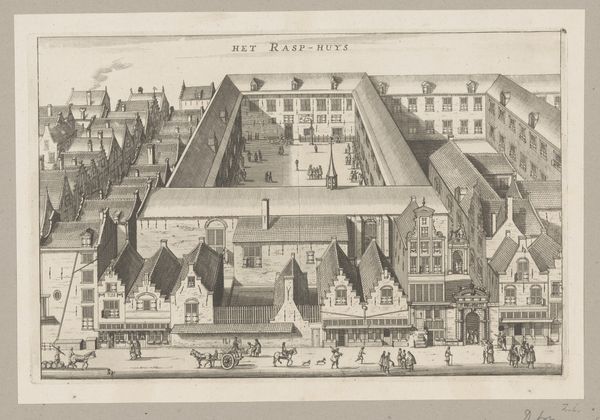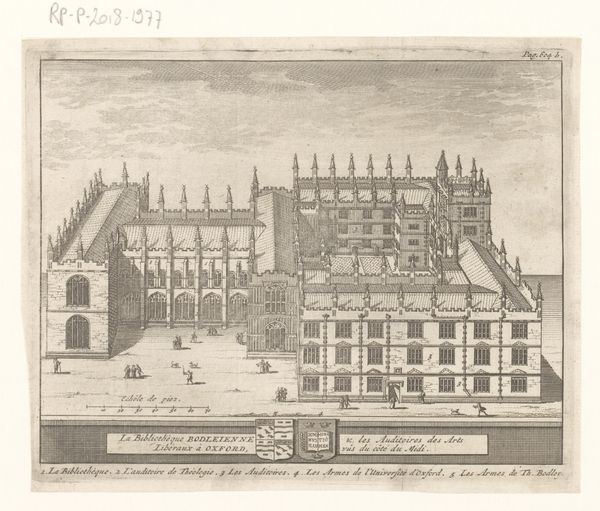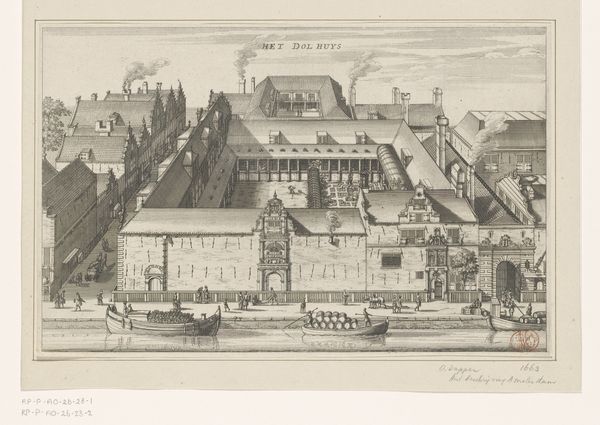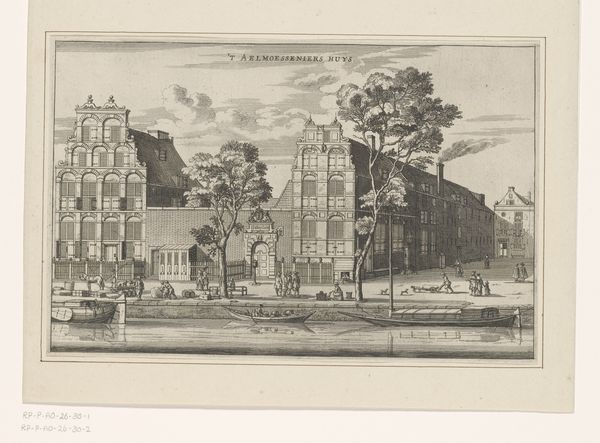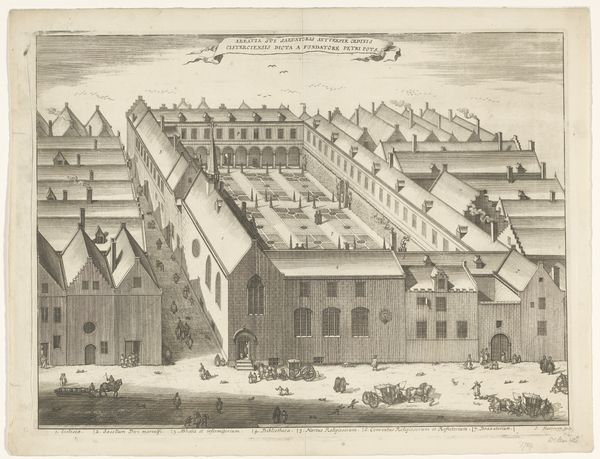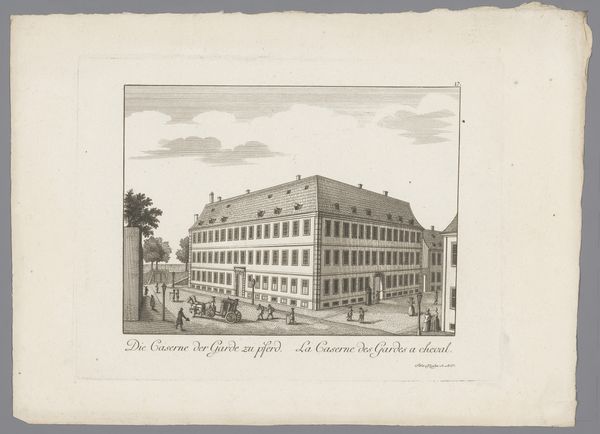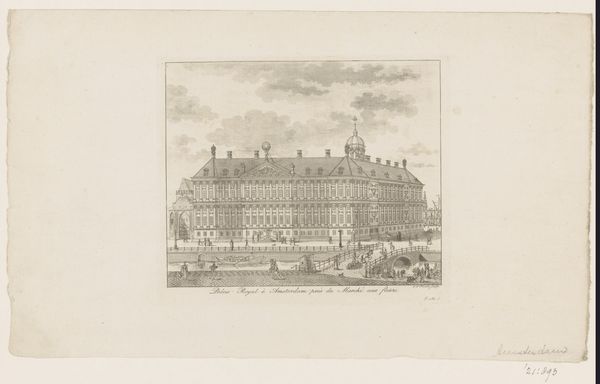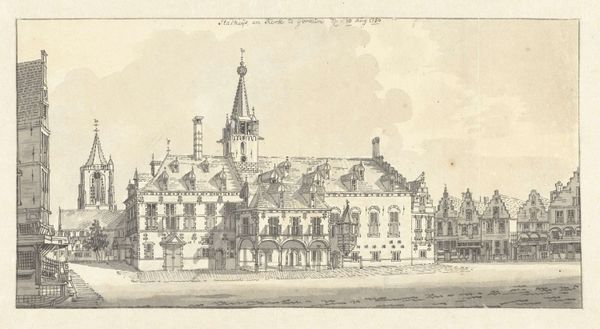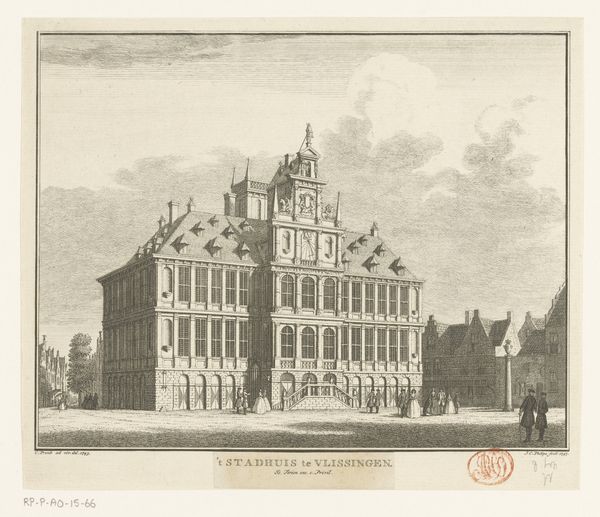
print, engraving, architecture
#
dutch-golden-age
# print
#
cityscape
#
engraving
#
architecture
Dimensions: height 194 mm, width 300 mm
Copyright: Rijks Museum: Open Domain
Editor: Here we have Jacob van Meurs' "View of the East India House in Amsterdam" from 1663, a cityscape rendered in engraving. It's incredible the level of detail he achieved using just lines! I’m really struck by how bustling it appears. What can you tell me about the materials and the society reflected here? Curator: It’s fascinating to consider the very process of producing this engraving. Think about the copper plate, the tools used to incise those lines, the labour involved in replicating it for distribution. The materiality of printmaking allowed for widespread dissemination of images, crucial for constructing a shared understanding—and ultimately, the power—of the Dutch East India Company. This print isn't just a neutral depiction of architecture. Editor: Right, the East India House was the heart of a global trade network. How does this connect with the social context of the artwork? Curator: This engraving performs a kind of material propaganda. By showcasing the impressive architecture and busy activity surrounding the East India House, it visually legitimizes the company's operations. The scale suggests immense wealth and power, acquired through trade…and of course, exploitation. Note the architectural details, emulating classical design, further asserting a kind of authority, all printed on paper, made accessible. Do you see a connection there? Editor: Absolutely. The architecture, rendered as a print, allows those in Amsterdam to access, and potentially be involved in the promise and activity of international trade…But I guess some people in the community weren’t invited to join in? Curator: Exactly. What’s missing, deliberately so, are the human costs: the colonized territories, the enslaved labourers, the raw materials extracted. This piece prompts us to think critically about whose stories are told through these objects and whose are actively omitted. The print acts as a form of marketing, for a powerful global organisation. Editor: This perspective really reframes the image for me. I initially saw it as just a historical record, but now it feels more like a carefully constructed narrative about Dutch power and commerce. Curator: It underlines how even seemingly simple visual representations can be powerful agents in shaping perceptions and concealing material realities. Consider this the next time you examine *any* work of art!
Comments
No comments
Be the first to comment and join the conversation on the ultimate creative platform.

